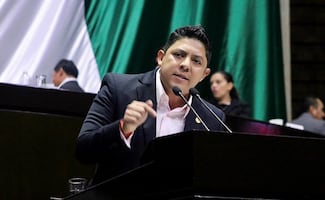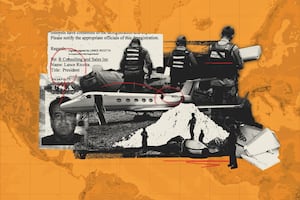Más Información

En SLP nunca ha existido una gobernadora y ahora hay una posibilidad real que así sea, asegura Ricardo Gallardo tras aprobación de "Ley Esposa"

Morena analiza disminución de pluris y elección popular de consejeros del INE: Monreal; serán revisadas en la reforma electoral, dice

Rastro de jets vinculados al narcotráfico lleva a un vendedor en California… y a un punto ciego de la regulación aérea en Estados Unidos

Secretaría Anticorrupción sanciona a dos empresas por buscar contratos con información falsa; imponen multa de miles de pesos

Banxico se despide de 2025 con otro recorte a la tasa de interés; queda en 7% por ajuste de 25 puntos base
This year, Mexico and Spain will sail into a joint archeological journey to continue with the search of the remains of the Our Lady of Juncal ship , one of the flagships of the New Spain’s Fleet , which sank in Mexico’s coast in 1631 , according to a report by Spain’s Culture and Sports Ministry .
This new campaign, that will take place during 10 days in Spring , will be co-financed by both countries and will have the participation of a team from the National Museum of Underwater Archeology located in Cartagena.

The decision was taken in the working session that took place in the Culture and Sports Ministry with the general director of Fine Arts, Román Fernández-Baca , and the deputy director of Underwater Archeology of Mexico’s National Institute of Anthropology and History (INAH) , Roberto Esteban Junco , to make progress in new joint projects in the framework of the Memorandum of Understanding signed on June 2014 between both countries regarding underwater cultural heritage.
Recommended: Two 16th century Spanish anchors found in Veracruz
Likewise, and with the objective of promoting the history of this vessel and the 1630-1631 New Spain’s Fleet , Mexico and Spain have committed to organize the first great exhibition made until know about the Our Lady of Juncal ship that will visit both countries and that will be presented first in Sevilla.
The fleet was made up of 13 vessels that would have departed from Cadiz in 1630 and went back to Spain from the San Juan de Ulúa port in October 1631 . After heavy storms, the fleet, including the Santa María and the Our Lady of Juncal , wrecked.
Recommended: Archeologists plumb the Gulf of Mexico in search of Cortés' sunken ships
The Manila Galleon
In the work session that took place on February 7 , Mexico and Spain agreed to endorse an international meeting of underwater archeology on the commercial route called The Manila Galleon .
Next Autumn , Acapulco will gather experts from both countries to further discuss this commercial route that connected the Philippines , America , and Spain for two and a half centuries.
Recommended: Mexican archeologist discovers Renaissance shipwreck

Mexico also reported to Spain the advances in the research carried out by the INAH on Hernán Cortés’s ships and promised to continue the collaboration, that began in July.
Both Mexico and Spain have a similar working line in matters of underwater archeological heritage framed on the principles established by UNESCO’s Convention on Underwater Archeological Heritage followed and defended by the two countries.
Recommended: INAH archeologists discover WWI submarine in Mexican coasts
mp
Noticias según tus intereses
[Publicidad]
[Publicidad]








